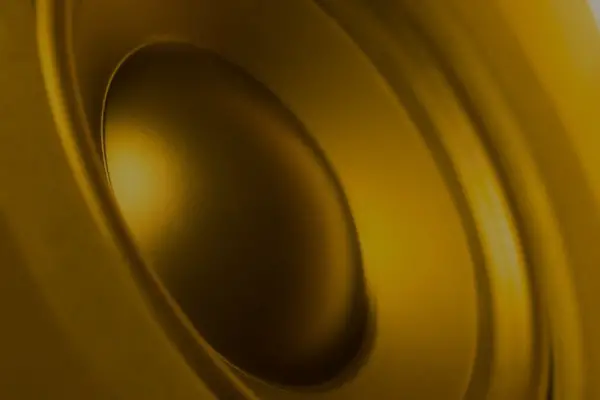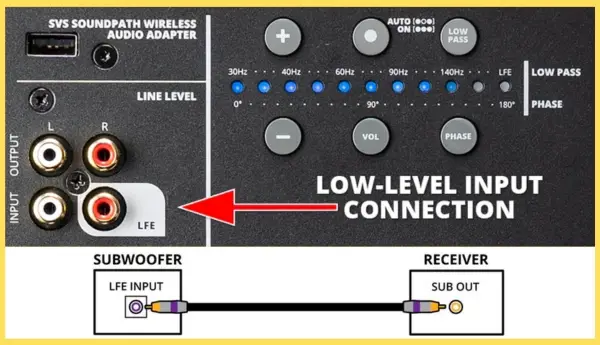What is LFE on a Subwoofer?
Many audio enthusiasts often ask, “what is LFE on a subwoofer?” To answer this, it’s essential to first understand what a subwoofer is and its role within a sound system.
A subwoofer is a specialized type of loudspeaker, typically responsible for reproducing the low-frequency sounds or bass in music and other audio applications. But apart from producing those low, rumbling bass lines and enhancing the depth of an audio track, subwoofers also play a significant role in reproducing Low-Frequency Effects (LFE), a term that is common in the audio and entertainment industry.
As we delve into the world of subwoofers and LFE, we will see how these two elements work together to create a dynamic and immersive audio experience.
Understanding Subwoofers
Subwoofers serve a crucial purpose in any sound system: to enhance and amplify low-frequency sounds, or what we call bass. These sounds are typically between 20 Hz and 200 Hz, and add depth and dimension that wouldn’t be achievable with other speakers alone.
There are different types of subwoofers to consider depending on your specific audio needs. Passive subwoofers require an external amplifier to power them, while powered or active subwoofers come with a built-in amplifier.
A subwoofer consists of several key components that all work together to produce those low-frequency sounds. The driver is the heart of the subwoofer, moving air to create sound. The amplifier provides power for the driver, and the enclosure or casing helps to shape the sound and protect the other components.
Understanding these parts can help you to make informed decisions about your subwoofer and maximize its performance.

Introduction to Low-Frequency Effects (LFE)
Low-Frequency Effects, commonly known as LFE, refer to the audio information specifically sent to a subwoofer by an audio or visual media source. This information is typically delivered through a dedicated channel, known as the LFE channel.
The LFE channel is responsible for delivering those deep, intense sounds that you often feel rather than hear, such as explosions in a movie or the kick drum in a concert.
In today’s modern sound systems, especially in home theatre setups, LFE plays a pivotal role. Its impact can be clearly seen (and felt), adding depth and realism to the sound, turning an ordinary media experience into a truly immersive one.
LFE is commonly associated with movie soundtracks, particularly in action films where there’s a need to enhance sounds like explosions or crashes. However, it’s also used in music production, especially in genres like House Music, Hip Hop, and Heavy Metal.
What is LFE on a Subwoofer?
So, what is LFE on a subwoofer? A sub, specifically designed to reproduce low-frequency sounds, is the perfect vehicle for delivering LFE. It takes the low-frequency sounds designated to the LFE channel and produces them, creating those impactful moments in films or the strong bass beats in music that we can often physically feel.
The LFE channel and the subwoofer are uniquely linked. In a typical 5.1 or 7.1 surround sound setup, the “.1” refers to the LFE channel that is specifically dedicated to the sub.
It’s through this channel that the LFE sounds are sent directly to the subwoofer, bypassing the other speakers in the setup. The impact of LFE on the overall audio experience is significant and can make any audio experience richer and more immersive.

Setting Up LFE on a Subwoofer
As soon as you’ve installed your subwoofer, you should set the LFE. It might seem like a complex task, but really it’s a straightforward process.
Usually, you’ll find a dedicated LFE or subwoofer output on your receiver or amplifier. This output should be connected to the subwoofer input using a suitable audio cable. This connection enables the subwoofer to receive the LFE signal directly.
An important consideration when setting up LFE on a sub is choosing the right crossover frequency. This setting determines the point at which your sound system will direct low-frequency sounds to the subwoofer instead of the main speakers.
Most home theater receivers and processors will allow you to set a crossover frequency, typically between 80 Hz and 120 Hz. The correct setting can vary based on your specific equipment and room acoustics, but many experts suggest starting with 80 Hz as a general rule.
Adjusting the subwoofer settings for optimal LFE is crucial. Many subwoofers have volume (or gain) and phase controls that can be adjusted to match the subwoofer’s output with the rest of the speakers in your system.
It’s really a process of trial and error, but the result is a well-integrated sound field, where the bass doesn’t overpower the rest of the audio but blends seamlessly into the overall experience.
LFE on a Subwoofer – Use it!
Understanding the importance of LFE and subwoofers in sound systems is crucial for anyone seeking an elevated audio experience.
Through careful setup, precise adjustment, and understanding how to connect and adjust the LFE on a subwoofer, you can leverage these powerful low-frequency effects to their fullest potential and with it make for the best listening experience possible.
FAQ Section
Should I set my subwoofer to LFE?
Yes, if your audio receiver has an LFE (Low-Frequency Effects) output, you should connect this to your subwoofer for the best sound quality. This allows your subwoofer to handle the low-frequency sounds, providing a more immersive audio experience.
Should I use LFE?
Absolutely. Utilizing LFE can dramatically enhance your audio experience, especially in a home theater setup. LFE brings out the deep bass sounds in movies and music, providing a more realistic and immersive listening experience.
When should you use LFE main?
“LFE Main” or “LFE+Main” setting should be used when you have full-range speakers that can handle low-frequency sounds along with a subwoofer. This setting sends low-frequency audio to both your speakers and your subwoofer, maximizing the bass output.
What’s the difference between LFE and LFE+MAIN?
The LFE setting means that low-frequency sounds are sent only to your subwoofer. The LFE+MAIN setting, on the other hand, sends these low-frequency sounds to both your main speakers and your sub. The latter setting can be beneficial if you have high-quality main speakers capable of handling low frequencies.
Can I use RCA cable for LFE?
Yes, an RCA cable can be used to connect the LFE output from your receiver to your subwoofer. Ensure that the cable is of good quality to prevent any loss in audio quality.
How do you use LFE on a subwoofer?
To use LFE on a subwoofer, connect the LFE output on your audio receiver to the LFE input on your sub using a suitable cable (often an RCA cable). You can then adjust the subwoofer’s settings to fine-tune the LFE output for optimal performance.
Is LFE the same as subwoofer out?
Yes, in most audio systems, the terms “LFE” and “subwoofer out” are used interchangeably. Both refer to the output from an audio receiver that sends the low-frequency effects signal to the subwoofer.

I am a passionate and skilled car audio enthusiast with 15 years of experience in the industry. My journey started when I replaced my first set of factory car speakers, sparking a deep love for high-quality sound. Since then, I have worked as a representative for renowned brands like Kenwood and Alpine.
With a background in both retail and distribution, I have developed a comprehensive understanding of the car audio market. Currently a certified (MECP) installer in the Mobile Electronics industry, my expertise lies in delivering top-notch audio installations. My knowledge, coupled with my genuine passion, makes me the go-to professional for all car audio needs.


